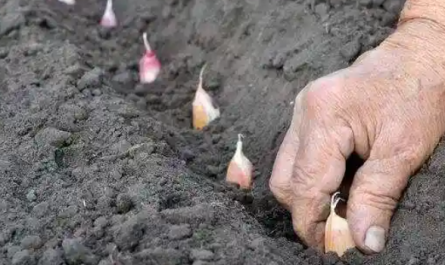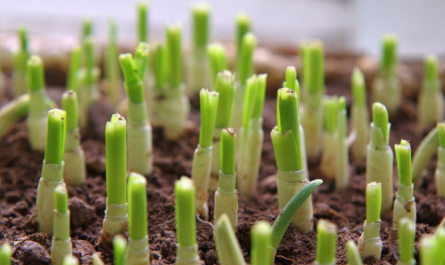Application Effects and Methods of Prohexadione Calcium in Garlic Cultivation
Functions: Prohexadione calcium is a plant growth retardant/inhibitor. Its core function is to inhibit gibberellin biosynthesis, thereby:
1. Controlling excessive vegetative growth of the above-ground parts (stems and leaves), resulting in shorter, sturdier plants with shorter internodes.
2. Promoting the translocation and accumulation of photosynthetic products in underground storage organs (bulbs/garlic bulbs).
3. Significantly promoting bulb (garlic bulb) enlargement, increasing single-bulb weight and yield.
4. Improving plant resistance to lodging.
5. Different concentrations of Prohexadione calcium (5%, 10%, 15%): Higher concentrations mean higher content of active ingredient per unit. In actual use, higher concentration formulations require greater dilution ratios to achieve a safe and effective field application concentration (ppm). The final effect depends on the actual spraying concentration of the active ingredient, not the formulation concentration itself.

Prohexadione calcium application method:
Foliar spraying is the primary method for applying Prohexadione calcium.
Key time for Prohexadione calcium application:
After the bulb differentiation stage (when garlic cloves begin to differentiate): Usually, in the middle of garlic growth, when the number of leaves is basically sufficient (e.g., 7-9 leaves) and the garlic bulb begins to enlarge, the first spray should be applied. Spraying at this time can effectively control excessive vegetative growth in the later stages and promote nutrient transfer to the garlic bulb.

After an interval of 10-15 days: Depending on the field growth and product instructions, a second spray may be necessary to consolidate the effect.
Spraying points: Choose a sunny, windless day, in the morning or evening. Spray evenly on the upper leaves of the plant, especially the heart leaves.
Strictly control the concentration and spraying time. Spraying too early or at too high a concentration may excessively inhibit growth and affect yield; spraying too late will result in poor effects.
Prohexadione calcium dosage (reference range, please refer to product label for accurate information):
The final spray concentration of the active ingredient (Prohexadione calcium) is typically in the range of 50-150 ppm (mg/L).

Example of Prohexadione calcium dilution calculation:
Prohexadione calcium 5% formulation (50g/L): To achieve a concentration of 100 ppm, it needs to be diluted 500 times (50g/L / 0.1g/L = 500). That is, 1 gram of formulation is diluted in 0.5 kg of water.
Prohexadione calcium 10% formulation (100g/L): To achieve a concentration of 100 ppm, it needs to be diluted 1000 times (100g/L / 0.1g/L = 1000). That is, 1 gram of formulation is diluted in 1 kg of water.
Prohexadione calcium 15% formulation (150g/L): To achieve a concentration of 100 ppm, it needs to be diluted 1500 times (150g/L / 0.1g/L = 1500). That is, 1 gram of formulation is mixed with 1.5 kg of water.
Dosage per acre: Usually, use 20-40 grams of formulation per acre (depending on the formulation concentration and target dilution ratio), diluted with 30-50 kg of water and sprayed evenly.
1. Controlling excessive vegetative growth of the above-ground parts (stems and leaves), resulting in shorter, sturdier plants with shorter internodes.
2. Promoting the translocation and accumulation of photosynthetic products in underground storage organs (bulbs/garlic bulbs).
3. Significantly promoting bulb (garlic bulb) enlargement, increasing single-bulb weight and yield.
4. Improving plant resistance to lodging.
5. Different concentrations of Prohexadione calcium (5%, 10%, 15%): Higher concentrations mean higher content of active ingredient per unit. In actual use, higher concentration formulations require greater dilution ratios to achieve a safe and effective field application concentration (ppm). The final effect depends on the actual spraying concentration of the active ingredient, not the formulation concentration itself.

Prohexadione calcium application method:
Foliar spraying is the primary method for applying Prohexadione calcium.
Key time for Prohexadione calcium application:
After the bulb differentiation stage (when garlic cloves begin to differentiate): Usually, in the middle of garlic growth, when the number of leaves is basically sufficient (e.g., 7-9 leaves) and the garlic bulb begins to enlarge, the first spray should be applied. Spraying at this time can effectively control excessive vegetative growth in the later stages and promote nutrient transfer to the garlic bulb.

After an interval of 10-15 days: Depending on the field growth and product instructions, a second spray may be necessary to consolidate the effect.
Spraying points: Choose a sunny, windless day, in the morning or evening. Spray evenly on the upper leaves of the plant, especially the heart leaves.
Strictly control the concentration and spraying time. Spraying too early or at too high a concentration may excessively inhibit growth and affect yield; spraying too late will result in poor effects.
Prohexadione calcium dosage (reference range, please refer to product label for accurate information):
The final spray concentration of the active ingredient (Prohexadione calcium) is typically in the range of 50-150 ppm (mg/L).

Example of Prohexadione calcium dilution calculation:
Prohexadione calcium 5% formulation (50g/L): To achieve a concentration of 100 ppm, it needs to be diluted 500 times (50g/L / 0.1g/L = 500). That is, 1 gram of formulation is diluted in 0.5 kg of water.
Prohexadione calcium 10% formulation (100g/L): To achieve a concentration of 100 ppm, it needs to be diluted 1000 times (100g/L / 0.1g/L = 1000). That is, 1 gram of formulation is diluted in 1 kg of water.
Prohexadione calcium 15% formulation (150g/L): To achieve a concentration of 100 ppm, it needs to be diluted 1500 times (150g/L / 0.1g/L = 1500). That is, 1 gram of formulation is mixed with 1.5 kg of water.
Dosage per acre: Usually, use 20-40 grams of formulation per acre (depending on the formulation concentration and target dilution ratio), diluted with 30-50 kg of water and sprayed evenly.
RECENT POSTS
-
Application Effects and Methods of Prohexadione Calcium in Garlic Cultivation
-
DA-6 application methods for potatoes sweet potatoes and ginger during their tuber expansion phase
-
Use these plant growth hormone to control plant height and promote strong stems during the jointing period of garlic
-
Comprehensive Potato Growth Control Plan
Featured News



